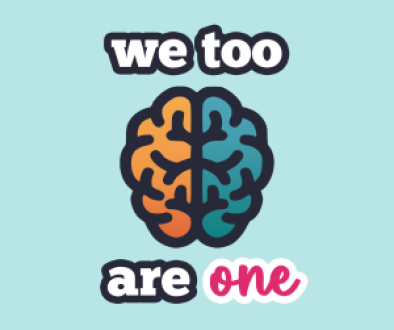Neurodivergent skills in a digital future

As workplaces adapt to rapid digital change, the value of neurodivergent professionals is gaining recognition. From AI development to cybersecurity and product design, the skills needed to thrive in the digital economy align strongly with the natural cognitive strengths of autistic, dyslexic, ADHD, and other neurodivergent candidates. Yet despite growing awareness, systemic barriers continue to exclude these talents from shaping our shared future.
From working with neurodivergent people in a therapy setting, I’ve come to understand that these skills aren’t abstract. They are developed from having to navigate a world not designed with neurodivergent people in mind. They’re forged through years of adapting, problem-solving, and building personal systems to work with (not against) the grain of their neurology.
Neurodivergent skill sets are essential in the digital age, so it’s time for businesses to actively embrace it as a competitive advantage. Many organisations are doing just that.
Pattern recognition
Neurodivergent thinkers frequently excel at identifying subtle patterns, trends, and inconsistencies – a skill prized in data analysis, machine learning, fraud detection, and beyond. Where others see noise, they find structure. These abilities are increasingly vital as businesses navigate complex datasets and look to extract actionable insights from information overload.
In therapy, we frequently hear AS clients describe an almost reflexive ability to spot what doesn’t fit. Often, this strength stems from years of scanning for social rules, sensory disruptions, or shifts in tone. What’s often pathologised as “hypervigilance” is, in professional contexts, deep pattern literacy.
In a 2021 report, JPMorgan Chase found neurodivergent employees were up to 140% more productive than their neurotypical peers in innovation-driven roles. This boost was attributed in part to strengths like pattern recognition and intense focus, highlighting how well-suited many neurodivergent professionals are to high-impact digital work.
Lateral thinking
Problem-solving in digital environments often requires seeing beyond the obvious — and that’s where lateral thinking thrives. Neurodivergent people often approach challenges from unexpected angles, offering novel pathways when linear logic falls short. This type of divergent thinking is invaluable for troubleshooting, product ideation, and untangling legacy system issues.
In therapeutic settings, we see this play out in the ways ND clients troubleshoot everyday life: creating visual schedules, automating reminders, challenging rigid norms. These are transferable strengths. In a business context, this mindset fuels agile thinking, reframes dead ends as possibilities, and pushes teams beyond “this is how we’ve always done it.”
With 85 million skilled workers predicted to be missing from the global tech workforce by 2030, according to Korn Ferry, embracing alternative problem-solvers is essential. Neurodivergent minds can address gaps in traditional approaches and help teams outthink their constraints.
Innovation
Innovation is often about sustained, detail-oriented iteration and reimagining existing systems. Many neurodivergent professionals bring a relentless curiosity and willingness to question norms, making them powerful agents of change. Companies like Microsoft, SAP, and EY have recognised this, creating dedicated neurodiversity hiring initiatives to tap into precisely this kind of potential.
And the results speak for themselves. In innovation-focused roles, neurodivergent employees consistently outperform traditional hires. Yet, despite this, according to CIPD, only 19% of employers say they have reviewed formal people management policies to make them neuro-inclusive.
The issue here isn’t a lack of creativity, but the environments that shut it down before it can begin. Standard interviews often reward quick verbal fluency, eye contact, and scripted enthusiasm. These all disadvantage many neurodivergent candidates. Even onboarding processes can be difficult, relying on social learning cues, ambiguous expectations, or overloaded PowerPoints.
What I often hear in my work is that ND professionals don’t struggle with the work itself, but with the unspoken assumptions around it. When those are removed, creative thinking has room to take shape and flourish.
Creativity
Neurodivergent creativity can manifest in visual thinking, associative reasoning, and storytelling. All ideal traits for digital content, UX design, and cross-platform branding. What’s often seen as “non-linear” thinking is in fact a strength: an ability to connect ideas in fresh, meaningful ways. These are the qualities that allow businesses to stand out in saturated digital markets, beyond traditional brainstorms or rapid team meetings.
And yet, 75% of dyslexic professionals report that recruitment processes disadvantage them. This troubling statistic clearly highlights a flaw in traditional systems that filter out precisely the people best placed to innovate.
For some clients, especially those with ADHD or dyslexia, ideas may arrive in bursts or spirals. Capturing and valuing these forms of thinking, rather than forcing conformity to neurotypical communication styles, is key to unlocking their value. Minor workplace adjustments, such as asynchronous collaboration, flexible presentation formats, or clearer briefing, often create the conditions needed for this creativity to land.
Systems thinking and complexity navigation
Whether it’s optimising user journeys or mapping technical architecture, the ability to mentally model and navigate complex systems is a vital (and often overlooked) strength of many neurodivergent professionals. Their capacity to absorb and manage detailed information, spot inefficiencies, and build from the ground up makes them natural fits for software development, DevOps, and digital transformation roles.
These roles in the digital landscape are mission-critical. With a growing demand for ethical AI, scalable infrastructure, and integrated digital tools, organisations need systems thinkers more than ever.
Real-world impact
The data is clear: inclusion is a strategic imperative. The unemployment rate of ND individuals doesn’t reflect capability, but exclusion. Meanwhile, most of the adjustments that neurodivergent workers need are simple and often cost nothing. According to the US Job Accommodation Network, up to 59% of workplace adjustments are free, such as offering flexible hours, clear instructions, or quiet working spaces.
Even small changes have ripple effects across teams. Enabling better focus, communication, and well-being improves culture and productivity for everyone.
The digital future is being built by specialists, deep thinkers, and bold innovators. Neurodivergent professionals are the architects, engineers, designers and problem-solvers that the digital economy urgently needs. To meet the challenges ahead, employers must move beyond accommodation and into true inclusion – rethinking recruitment, embracing flexibility, and designing work around people over processes.
From my experience supporting neurodivergent adults in couples therapy, the real question isn’t whether inclusion is affordable – it’s how much we’re already losing by ignoring this talent. I see every day what’s possible when the right support is in place.



